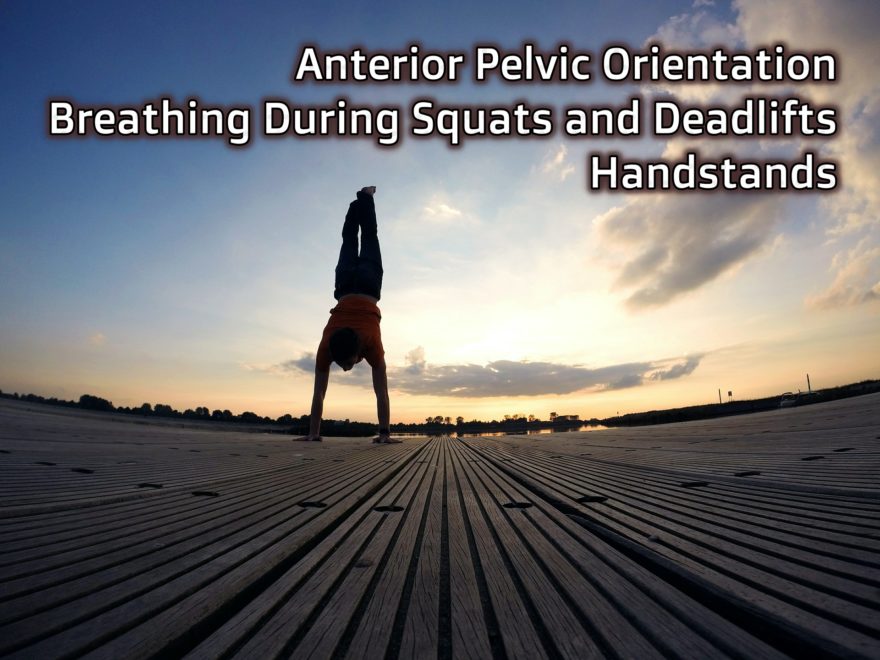Movement Debrief Episode 108 is in the books. Below is a copy of the video for your viewing pleasure, and audio if you can’t stand looking at me. Here is the setlist:
- What is anterior pelvic orientation/tilt?
- How does this happen with different infrasternal angle presentation?
- When do I coach breathing sequences within a lift like the squat and deadlift?
- How does the breathing sequence differ if I am coaching a squat/deadlift for movement options versus max effort?
- What could a squat be useful at improving movement-wise?
- How about a hinge?
- What are the benefits of handstands?
- How can headstand and handstand variations be used to improve movement options?
If you want to watch these live, add me on Instagram. Enjoy!
and the audio version:

 t
tTable of Contents
Below are the links mentioned in the show notes
Check out Human Matrix promo video below:
Below are some testimonials for the class:
Want to sign up? Click on the following locations below:
January 25th-26th, Scotts Valley, CA (SOLD OUT!)
April 4th-5th, 2020, Atlanta, GA (early bird ends March 6th at 11:55pm)
May 23rd-24th, 2020, Dickinson College in Carlisle PA (Early bird ends April 26th at 11:55pm!) [Approved for 14 Category A CEUs for athletic trainers]
June 6th-7th, 2020, Minneapolis, MN (Early bird ends May 3rd at 11:55pm!)
August 1st-2nd, Boston, MA (Early bird ends July 5th at 11:55pm!)
September 12th-13th, Montreal, Canada (Early bird ends August 16th at 11:55pm!) [6 CEUs approved for Athletic Therapists by CATA!]
October 3rd-4th, Ann Arbor, MI (Early bird ends September 6th at 11:55pm!)
November 7th-8th, Charlotte, NC (Early bird ends October 11th at 11:55pm!)
November 21st-22nd, San Diego, CA (Early bird ends October 25th at 11:55pm!)
Or check out this little teaser for Human Matrix home study. Best part is if you attend the live course you’ll get this bad boy for free!
Here is a signup for my newsletter to get nearly 5 hours and 50 pages of content, access to my free breathing and body mechanics course, a free acute:chronic workload calculator, basketball conditioning program, podcasts, and weekend learning goodies:
[yikes-mailchimp form=”1″ submit=”Get learning goodies and more”]
Go here and here to learn about infrasternal angles
Pulling, Reaching, and Stacking During Big Lifts – Movement Debrief Episode 107
Here is a great video where Bill Hartman deep dives into testing hip flexion
Decline quadruped on elbows is an early activity I use if I need to invert someone:
Here is one of the first headstand variations I use:
Then if you want to drive hip extension, you can check this one out:
Anterior Pelvic Orientation
I was recently talking to a group about Wide and Narrow ISAs and the effect on the pelvis and referred to a video you did on the anterior orientation coming from “at the pelvis” or “above the pelvis”
I explained it the best I could but I remember your video with the model being quite easy to understand!
Unfortunately, I couldn’t find that bit I wanted and was hoping you could help me out with a link so I can pass on your great work you continue to do
Breathing During Squats and Deadlifts
When do you prescribe inhale-pause-exhale during squats and deadlifts?
Handstands
Hey Zac – if u fancy something different for a debrief – how about talking about the benefits of Handstand Practise [ie against a wall for most people] for posture, breathing, muscle balance etc.
Sum Up
- Wide infrasternal angles have extension within the pelvis due to sacral nutation from an exhaled axial skeleton
- Narrow infrasternal angles have extension above the pelvis due to increased anteroposterior ventral cavity dimensions
- Early-phase squatting and deadlifting should focus on setting the stack and then teaching the movement
- If going after specific limitations, inhale into the limitations
- Valsalva maneuvers are useful for max effort lifts
- Handstands are a great terminal exercise to improve upper thorax anteroposterior compression; with headstands being the intermediary
Image by Maurice Müller from Pixabay

